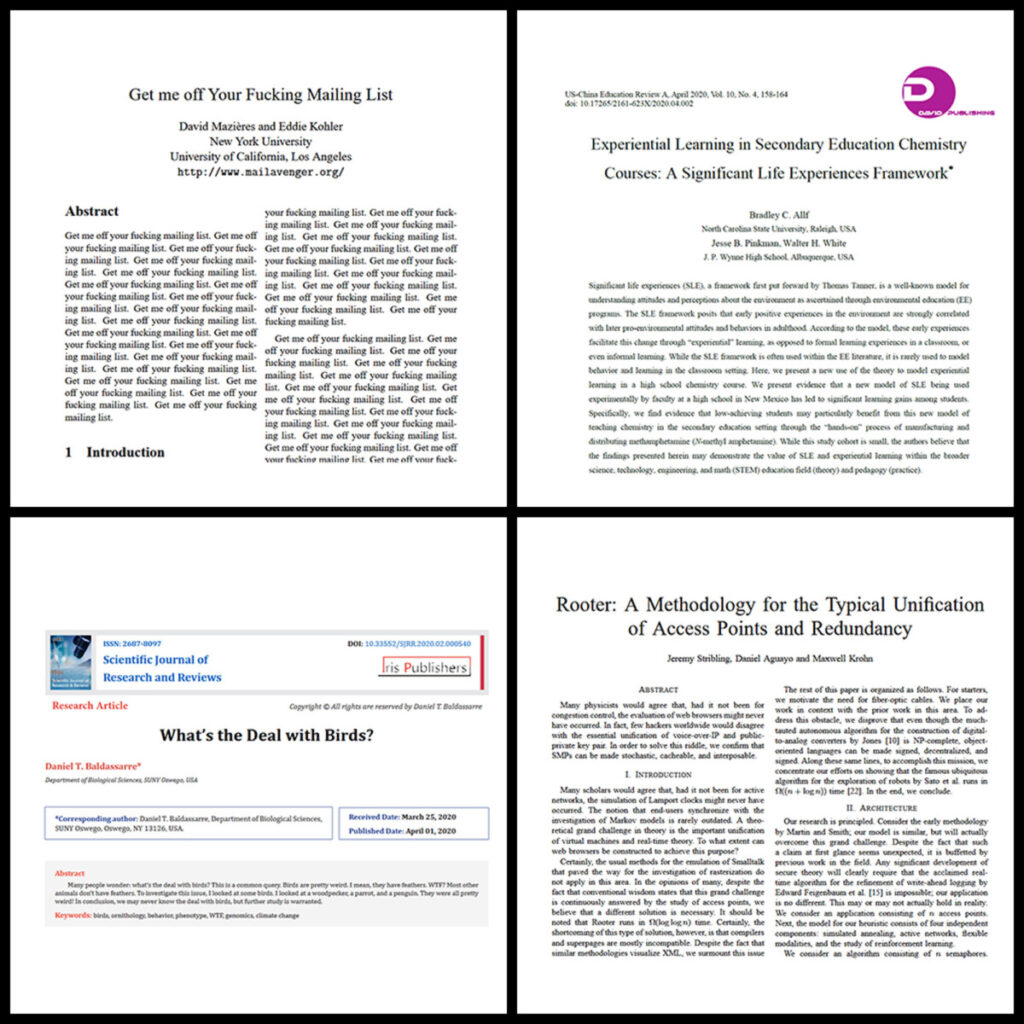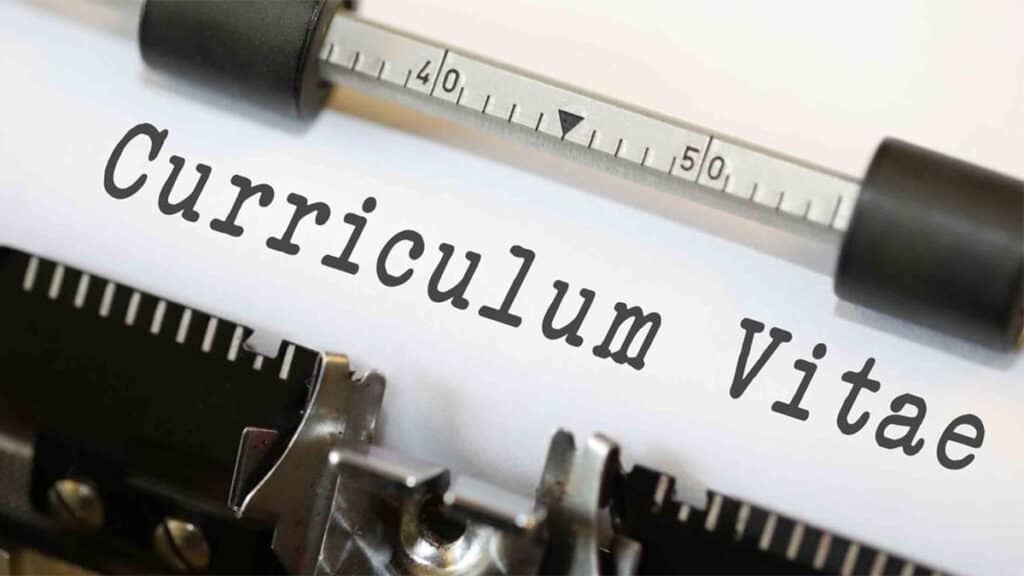We recently posted an “Only Connect” wall, where we challenged you to put sixteen clues into four groups.
This article looks at one of the groups, discussing it in a little more detail.
Before we begin
If you don’t know about Only Connect, take a look at the article we wrote which describes the BBC quiz show and also explains why we are attracted to it and which parts of the show we draw from.
The Only Connect wall that we presented, and from which this article draws from, can be seen here. It presents the wall and the answer.
The connection
The connection between four of the papers (see Figure 1) on the wall is that they were all sting (or spoof, if you prefer) papers. That is, they were submitted to scientific journals/conferences to test the robustness of the peer review process and to see if they could get the sting/spoof paper accepted.
All of these papers managed to get through peer review, and were accepted, which strongly suggests that there was not any.
The papers
1. Get me off your F*@^ing Mailing list
This paper was originally written as a conference paper and was subsequently submitted to a journal (International Journal of Advanced Computer Technology), in 2014. The paper repeats the same phrase over and over again, even incorporating it into graphs and figures.
We have previously written an article about this paper, which looks at its history, so we will not repeat all this information here.
You might also be interested in:
- Kendall, G. Case Study: What Happens to a Journal after it Accepts a Spoof Paper? (2021) Publishing Research Quarterly, 37 (4): 600-611.
This paper looks at how the journal has performed since accepting the paper, on the basis that the idea behind a spoof paper is to highlight the lack of peer review and alert scholars to submitting to the journal.
Spoiler alert: The journal performed better in the twelve issues following the acceptance of this paper, than it did in the previous 12 years.
The spoof paper was never actually published, as the authors did not pay the article processing charges, but we have archived a copy of the paper, which is available here.
2. Experiential Learning in Secondary Education Chemistry Courses: A Significant Life Experiences Framework
The title of this paper is intriguing, in that it could easily be the title of a legitimate scientific paper, but the tell tale signs are there immediately after that.
If you familiar with the TV series Breaking Bad, the author names should leap off the page at you. Bradley C. Allf is the person who submitted the paper (to US-China Education Review A) but the other two authors (Jesse B. Pinkman and Walter H. White) are characters from the show.
The paper, essentially (loosely), follows the story line of the show.
You can read about the story of the spoof paper, in an article written by the author (Allf) and we have also written about it, but with a focus on the journal/publisher, rather than the paper.
The paper is no longer available on the journal’s web site, although it was published for a while. We have archived the paper and you can download it from here.
3. What's the Deal with Birds?
This is a great example of a spoof paper. We love the abstract:
“Many people wonder: what’s the deal with birds? This is a common query. Birds are pretty weird. I mean, they have feathers. WTF? Most other animals don’t have feathers. To investigate this issue, I looked at some birds. I looked at a woodpecker, a parrot, and a penguin. They were all pretty weird! In conclusion, we may never know the deal with birds, but further study is warranted.“
,,, but our favorite part of the paper is the acknowledgement which says:
“We thank Big Bird from Sesame Street for comments on the manuscript. Several trained monkeys transcribed videos.“
To be honest, though, the entire paper is worth a read.
The paper was submitted to Scientific Journal of Research and Reviews and was published, even being assigned a DOI (10.33552/SJRR.2020.02.000540), but it has since been withdrawn and the DOI is no longer valid.
The paper attracted some publicity and we have mentioned this paper in one of our previous articles.
The paper is no longer available, but we have archived a copy.
4. Rooter: A Methodology for the Typical Unification
of Access Points and Redundancy
This paper was generated using “SCIgen – An Automatic CS Paper Generator“. This was way before ChaptGPT.
The paper was accepted, albeit for a non-peer reviewed session at the conference, and a fee was requested.
We mention this paper in a previous article of ours and the authors provide more detail on the SCIgen web site, which includes correspondence with the conference.
Comments
We find the topic of sting/spoof papers interesting. Unfortunately, there is not any evidence that they do any good. The journals we mention above are still active and do not seem to have suffered from accepting an obviously spoof paper (Kendall, 2021).
Some authors (Teixeira da Silva, J.A., 2021) even go as far as saying that sting papers are unethical. They state:
“COPE, ICMJE and CSE are thus urged to rapidly and urgently reform their guidelines to recognize this serious growing threat to the integrity of academic literature, biomedical and other, to specifically indicate that sting papers, or any published document or paper for that matter, that carries any false element (fake name, fake email, fake affiliation, false or concocted content) is unethical, without exception.“
It would make an interesting study to identify all the sting/spoof papers that have been submitted and to see what (if any) effect it had on the journal/conference.
Article history
Where an article has been updated since first being written, we provide a history of the changes. Why? Why not :-).
- The original article was published on 26 February 2023.
- The article was updated on 28 July 2023. We removed a profanity (at least, putting in special characters) we we felt that search engines did not like it.



